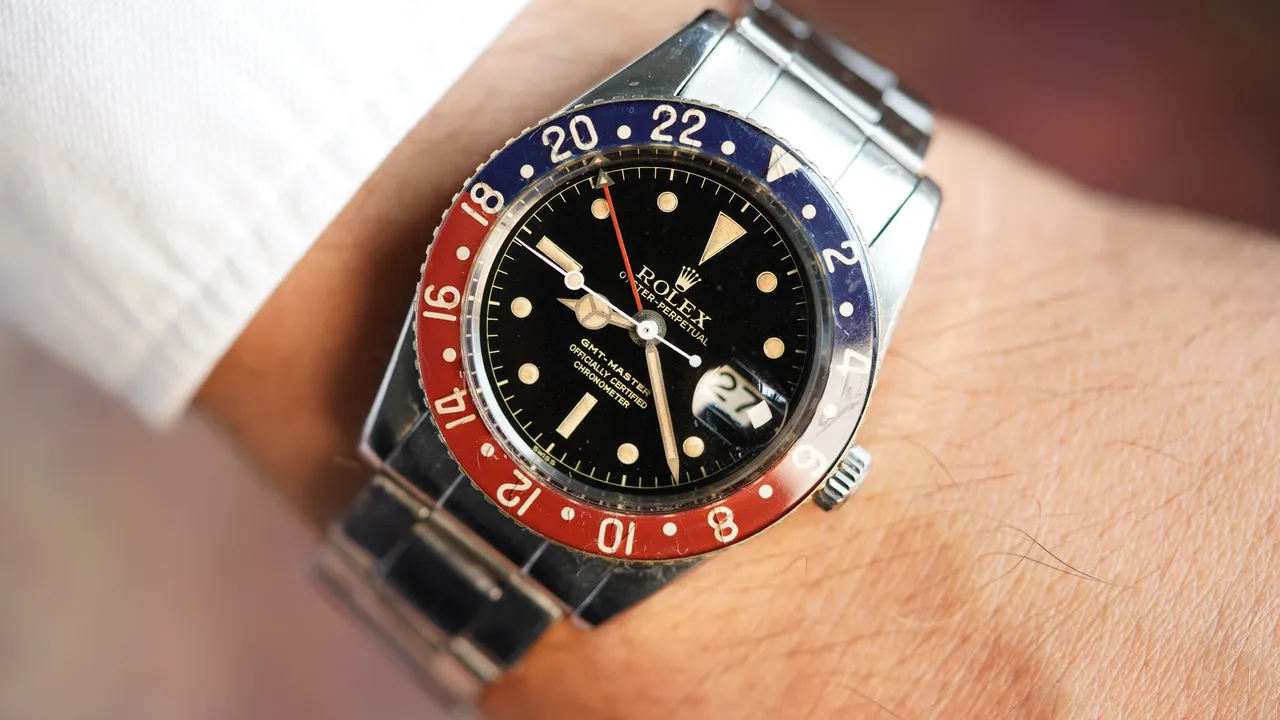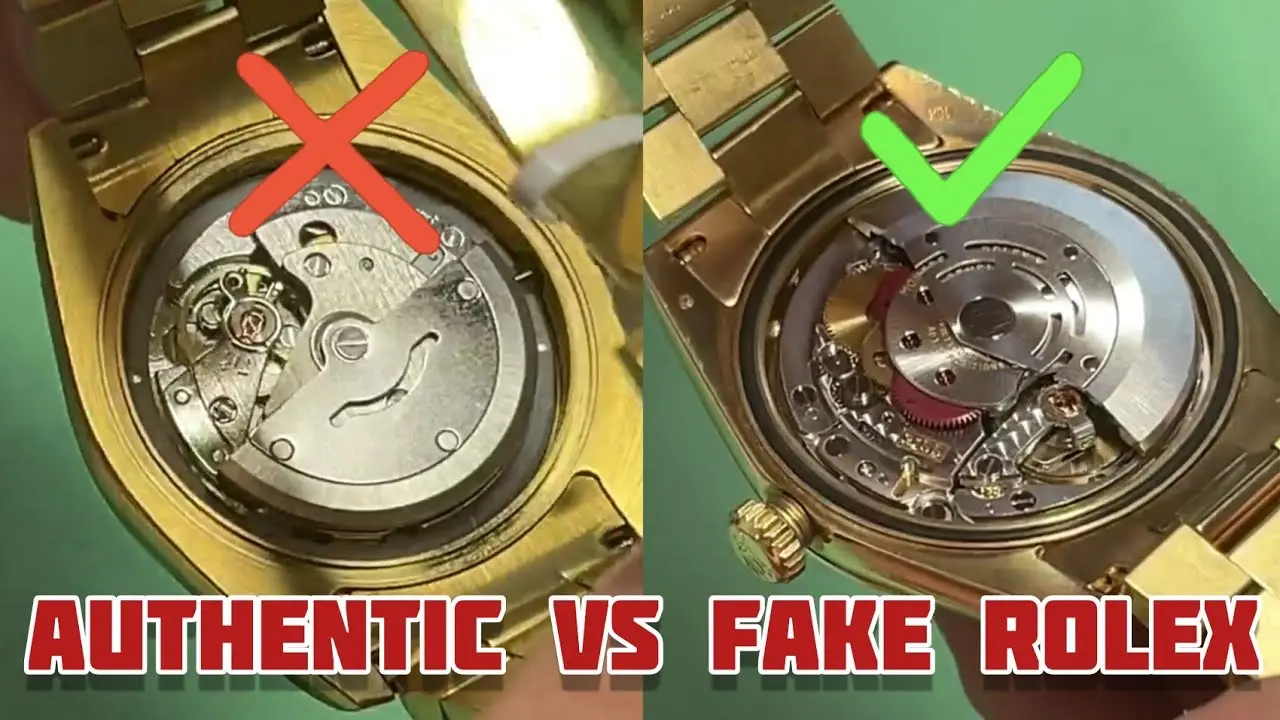Rolex GMT-Master_ A Collector's Guide to Vintage Variations
A comprehensive guide to vintage Rolex GMT-Master variations. Learn about bezel colors, case materials, and the history behind these iconic pilot watches.

The Enduring Appeal of the Rolex GMT-Master Vintage Models
Hey there, fellow watch enthusiasts! Let's dive deep into the fascinating world of the vintage Rolex GMT-Master. This iconic timepiece, originally designed for Pan Am pilots to track multiple time zones, has become a coveted collectible. But navigating the vintage GMT-Master landscape can be tricky. This guide will help you understand the key variations, identify valuable features, and appreciate the history behind these incredible watches.
Understanding the Rolex GMT-Master Reference Numbers and History
The GMT-Master's story begins in 1954 with the reference 6542, affectionately nicknamed the 'Bakelite Bezel.' This early model is highly sought after due to its unique bezel material (prone to cracking, hence its rarity) and lack of crown guards. Subsequent references like the 1675, 16750, and 16710 brought improvements in movement, durability, and design. Knowing these reference numbers is crucial for identifying and valuing vintage GMT-Masters.
Rolex GMT-Master Bezel Variations: Pepsi Coke and Beyond
The bezel is arguably the GMT-Master's most defining feature. The original 'Pepsi' bezel (red and blue) is legendary. The 'Coke' bezel (red and black) arrived later, offering a bolder look. But there are other, rarer bezel variations to keep an eye out for. Faded bezels, often referred to as 'ghost' bezels, can add character and value. The condition of the bezel is a key factor in determining a vintage GMT-Master's worth, so examine it closely!
Case Materials and Their Significance in Vintage Rolex GMT-Master Watches
While the GMT-Master is most commonly associated with stainless steel, there are also gold and two-tone (Rolesor) versions. A gold GMT-Master exudes luxury, while a two-tone model offers a more understated elegance. The case material, along with its condition, impacts the watch's overall value and collectibility. Look for sharp edges and minimal signs of over-polishing, as these are indicators of a well-preserved case.
Rolex GMT-Master Dial Variations: From Matte to Glossy
The dial is another area where you'll find interesting variations. Early GMT-Masters featured matte dials, which were later replaced by glossy dials with white gold surrounds. 'Tropical' dials, where the black paint has faded to brown due to UV exposure, are particularly desirable among collectors. Examine the dial closely for any signs of damage or redialing, as these can significantly affect the watch's value.
Movements Powering the Rolex GMT-Master: A Technical Overview
The GMT-Master has been powered by several different Rolex movements over the years. Understanding these movements is crucial for appreciating the watch's technical evolution. The early 1036 movement was followed by the 1575, 3075, and eventually the 3185. Each movement brought improvements in accuracy, reliability, and functionality. Knowing which movement is correct for a specific reference is essential for authentication.
Recommended Vintage Rolex GMT-Master Models for Collectors
Okay, let's get to the good stuff! Here are a few specific vintage GMT-Master models I recommend for collectors:
- Rolex GMT-Master 6542 (Bakelite Bezel): The holy grail of GMT-Masters. Extremely rare and valuable. Expect to pay upwards of $50,000+ for a good example. Use Case: A centerpiece in a serious Rolex collection, rarely worn.
- Rolex GMT-Master 1675 (Long E Dial): The 'Long E' refers to the longer middle stroke on the 'E' in 'Rolex' on the dial. These are highly sought after by detail-oriented collectors. Price: $15,000 - $30,000 depending on condition. Use Case: Worn occasionally for special events, a conversation starter.
- Rolex GMT-Master 16750 (Quickset Date): A more modern vintage GMT-Master with a quickset date function, making it more practical for everyday wear. Price: $10,000 - $20,000. Use Case: A daily wearer for the vintage enthusiast.
- Rolex GMT-Master 16710 (Pepsi Bezel): The last of the aluminum bezel GMT-Masters. A great entry point into vintage GMT-Master collecting. Price: $8,000 - $15,000. Use Case: A versatile watch that can be dressed up or down.
Comparing the Rolex GMT-Master 1675 vs 16750: Key Differences
Let's compare two popular vintage GMT-Master references: the 1675 and the 16750. The 1675 features a matte dial and a non-quickset date, while the 16750 has a glossy dial and a quickset date. The 16750 also has a slightly thicker case. The 1675 is generally considered more 'vintage' in feel, while the 16750 offers more modern functionality. The 1675 typically commands a higher price due to its earlier production and more classic aesthetics.
Rolex GMT-Master Authenticity: How to Spot a Fake
Unfortunately, the vintage watch market is rife with fakes. Here are some tips to help you spot a fake GMT-Master:
- Check the dial: Look for crisp printing, correct fonts, and even lume application.
- Examine the movement: The movement should be clean, properly finished, and match the reference number.
- Inspect the case: Check for correct dimensions, sharp edges, and consistent finishing.
- Verify the serial and reference numbers: Research the numbers to ensure they are consistent with the model and production year.
- Buy from reputable dealers: Always purchase from trusted sources with a solid reputation.
Investing in a Vintage Rolex GMT-Master: Is It Worth It?
Vintage Rolex GMT-Masters have proven to be excellent investments over the long term. Their value has steadily increased due to their historical significance, iconic design, and limited production. However, like any investment, there are risks involved. Thorough research, careful evaluation, and buying from reputable sources are crucial for making informed decisions. The GMT-Master isn't just a watch; it's a piece of history on your wrist. Enjoy the hunt and wear it in good health!
:max_bytes(150000):strip_icc()/277019-baked-pork-chops-with-cream-of-mushroom-soup-DDMFS-beauty-4x3-BG-7505-5762b731cf30447d9cbbbbbf387beafa.jpg)






